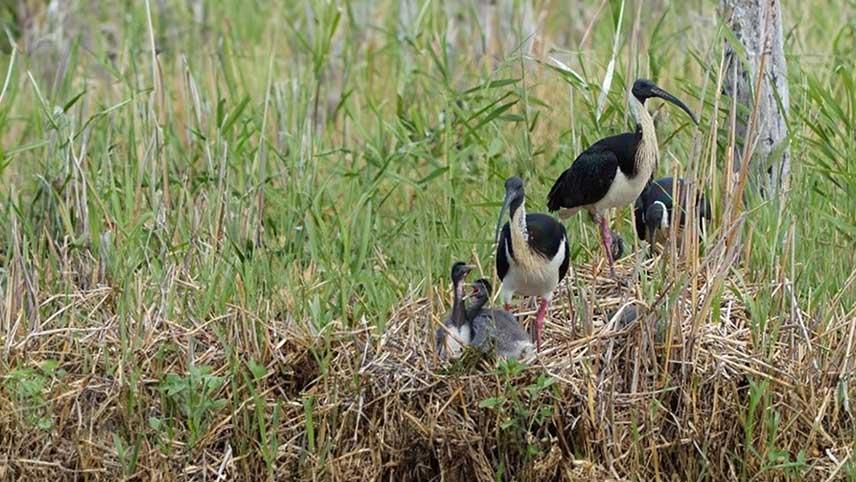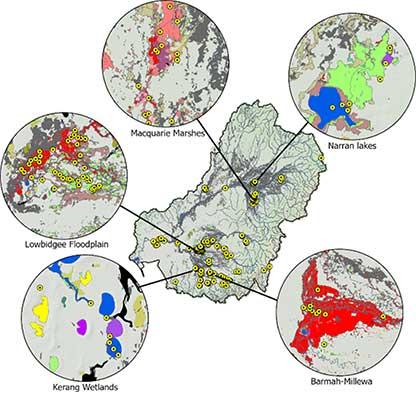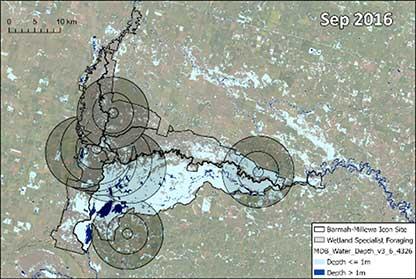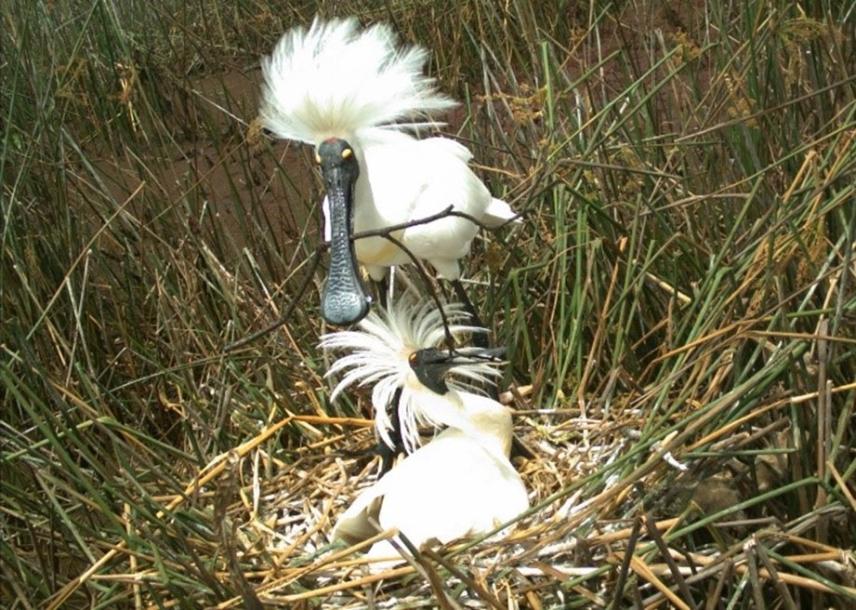
It's important to understand the science of waterbirds, as they’re indicators of a healthy environment. They play an important role in ecosystems.
Waterbirds help spread native plant seeds and nutrients, control insect and pest fish numbers and they start breeding when wetlands have plenty of water present. So, when there are lots of young waterbirds in a wetland, it usually means water flows have occurred at the right time of year.
Recently we funded a tactical project through the Murray–Darling Water and Environment Research Program (MD-WERP) to better understand and map feeding habitat availability for waterbirds in the areas surrounding breeding sites.
The project was a collaborative effort, led by Heather McGinness from Commonwealth Scientific and Industrial Research Organisation (CSIRO), Shane Brooks from Brooks Ecology and Technology, and Jenny Hale, a consultant ecologist.
The project came about because “it’s important to ensure that good feeding habitat is available for waterbirds when they’re breeding and raising young.” Ms McGinness said.
The big advance made by this project was the use of brand-new satellite tracking information describing how far birds travel from their nests to feeding areas. This information was gleaned from CSIRO’s waterbird movement tracking research done as part of the Commonwealth Environmental Water Holder’s Flow Monitoring Evaluation Research (Flow-MER) program.


Satellite data can be helpful for scientists to gather information about an area without regularly having to go out to each wetland. This is important, as many of the breeding sites are hard to reach. It means we can discover details about waterbird families with minimal disturbance to them, or their habitat.
The researchers used the movement tracking data together with remote-sensing data about wetland environments to focus in on habitats near nesting sites, within distances birds are known to prefer to travel from their nests.
“Understanding their preferred travel distances helps us manage wetlands effectively,” Ms McGinness said.
“By focusing our management on habitats closer to their nests, the birds save energy and we make our conservation efforts more efficient”.
Just like when you drive a car and need enough fuel to return home, the waterbird parents need energy to fly out, find food, return home, and still feed their young.
– Heather McGinness, CSIRO
“The further they have to fly, the more energy they waste.”
“You might be surprised just how much food is needed for chicks, juveniles and parents. The parents need to spend a lot of their time foraging for food.”
“Another consideration is that different waterbird species have different needs,” says Heather.
“Straw-necked ibis can feed in a wide range of habitats, including both dry and shallow water areas. They eat both invertebrates such as locusts and larger prey such as frogs.”
“Whereas Royal spoonbills are specialised to feed in shallow water, eating mostly fish, crustaceans and aquatic invertebrates.”

In practice, this research will help manage the timing and amount of water releases. Water levels at breeding sites and foraging sites need to be suitable not only for nesting and raising chicks, but also for supporting young birds that have left the nest and that are still learning how to find food.
“The outcomes go further than just ensuring the release of water into wetlands used for breeding – they allow us to think about where and when we might be able to release water to support waterbird feeding too.” Ms McGinness added.
The research will help guide and support decisions around where, why, and which wetlands could be prioritised as part of water for the environment.
Water for the environment is a term for water that’s released into an ecosystem for environmental outcomes. It ensures that water is managed to support ecological needs.
Funding for this project comes from the Australian Government MD-WERP and is supported by partners including the Department of Climate Change, Energy, the Environment and Water, Commonwealth Environmental Water Holder, CSIRO, and the Murray–Darling Basin Authority.
Download the Foraging Habitats for Colonial Nesting Waterbirds in the Murray–Darling Basin report, which includes more detail on the methods used to collect this research.
Watch the 2024 MD-WERP Symposium livestream where Heather McGinness presented on this project.